 W
WAdeloidea is a superfamily of primitive monotrysian moths in the order Lepidoptera which consists of leafcutters, yucca moths and relatives. This superfamily is characterised by a piercing, extensible ovipositor used for laying eggs in plants. Many species are day-flying with metallic patterns.
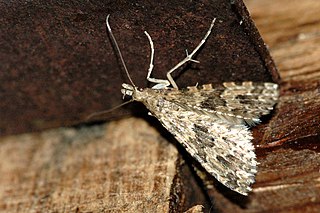 W
WAluctoidea is the superfamily of many-plumed and false plume moths. These small moths are most easily recognized by their wings. These each consist of many narrow strips of membrane around the major veins, instead of a continuous sheet of membrane between the veins. In living moths in the wild, this is often hard to see however. When they are at rest, the "plumes" partly overlap, appearing as solid wings. But even then, they can be recognized by the wings having a marked lengthwise pattern and uneven edge.
 W
WBombycoidea is a superfamily of moths. It contains the silk moths, emperor moths, sphinx moths, and relatives. The Lasiocampoidea are close relatives and were historically sometimes merged in this group. After many years of debate and shifting taxonomies, the most recent classifications treat the superfamily as containing 10 constituent families. Their larvae often exhibit horns.
 W
WCallidulidae, the only known family of the superfamily Calliduloidea, is the family of Old World butterfly-moths, containing eight genera. They have a peculiar distribution, restricted to the Old World tropics of South East Asia to Australasia and Madagascar. The three subfamilies exhibit both day- and night-flying behaviour.
 W
WChoreutidae, or metalmark moths, are a family of insects in the lepidopteran order whose relationships have been long disputed. It was placed previously in the superfamily Yponomeutoidea in family Glyphipterigidae and in superfamily Sesioidea. It is now considered to represent its own superfamily. The relationship of the family to the other lineages in the group "Apoditrysia" need a new assessment, especially with new molecular data.
 W
WCimeliidae, the gold moths, is a family of moths that is now placed in the macroheteroceran superfamily Drepanoidea, although previously placed in its own superfamily. Uniquely, they have a pair of pocket-like organs on the seventh abdominal spiracle of the adult moth which are only possibly sound receptive organs. They are quite large and brightly coloured moths that occur in southern Europe and feed on species of Euphorbia. Sometimes they are attracted to light. The family was first described by Pierre Chrétien in 1916.
 W
WCopromorphoidea, the "fruitworm moths", is a superfamily of insects in the lepidopteran order. These moths are small to medium-sized and are broad-winged bearing some resemblance to the superfamilies Tortricoidea and Immoidea. The antennae are often "pectinate" especially in males, and many species of these well camouflaged moths bear raised tufts of scales on the wings and a specialised fringe of scales at the base of the hindwing sometimes in females only; there are a number of other structural characteristics. The position of this superfamily is not certain, but it has been placed in the natural group of "Apoditrysia" "Obtectomera", rather than with the superfamilies Alucitoidea or Epermenioidea within which it has sometimes previously been placed, on the grounds that shared larval and pupal characteristics of these groups have probably evolved independently. It has been suggested that the division into two families should be abandoned.
 W
WCossoidea is the superfamily of moths that includes carpenter moths and relatives. Like their likely sister group Sesioidea they are internal feeders and have spiny pupae with moveable segments to allow them to extrude out of their exit holes in stems and trunks during emergence of the adult.
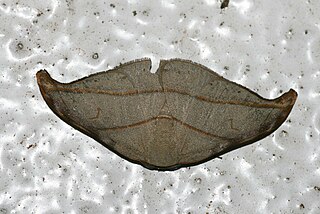 W
WDrepanoidea is the superfamily of "hook tip moths". See Minet and Scoble (1999) for a comprehensive overview.
 W
WEpermeniidae or the fringe-tufted moths is a family of insects in the lepidopteran order with about 14 genera. Previously they have been divided in two subfamilies Epermeniinae and Ochromolopinae but this is no longer maintained since the last group is probably hierarchically nested within the first. They are presently placed in their own superfamily but have previously been placed among the Yponomeutoidea or Copromorphoidea with which they share some features. Their systematic placement among the apoditrysian group "Obtectomera" is however uncertain. They show some morphological similarities to the "plume moths", for example the wing fringe has similar groups of scales. There are also some similarities to Schreckensteinioidea, for example spiny legs and at least in some species an open-network cocoon. The genus Thambotricha from New Zealand may be the sister group of all other extant members. The most important genera are Epermenia, Ochromolopis and Gnathifera. The group has been extensively revised and catalogued by Dr Reinhard Gaedike.
 W
WEriocraniidae is a family of moths restricted to the Holarctic region, with six extant genera. These small, metallic moths are usually day-flying, emerging fairly early in the northern temperate Spring. They have a proboscis with which they drink water or sap. The larvae are leaf miners on Fagales, principally the trees birch (Betula) and oak (Quercus) but a few on Salicales and Rosales.
 W
WGalacticidae is a recently recognised and enigmatic family of insects in the lepidopteran order. These moderate sized moths are 8–17 mm in wingspan and have previously been embedded within several lepidopteran superfamilies, but Galacticidae is currently placed in its own superfamily at the base of the natural group Apoditrysia.
 W
WGelechioidea is the superfamily of moths that contains the case-bearers, twirler moths, and relatives, also simply called curved-horn moths or gelechioid moths. It is a large and poorly understood '"micromoth" superfamily, constituting one of the basal lineages of the Ditrysia.
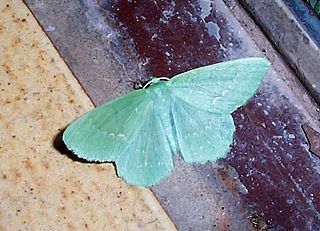 W
WThe Geometroidea are the superfamily of geometrid moths in the order Lepidoptera. It includes the families Geometridae, Uraniidae, Epicopeiidae, Sematuridae, and the recently established family Pseudobistonidae. The monotypic genus Apoprogones was considered a separate geometroid family of the Apoprogonidae by a minority, but is now subsumed under the Sematuridae.
 W
WGracillarioidea is a large superfamily containing four families of insects in the order Lepidoptera. These generally small moths are miners in plant tissue as caterpillars. There are about 113 described genera distributed worldwide, the most commonly encountered of which are leaf miners in the family Gracillariidae.
 W
WHedylidae, the "American moth-butterflies", is a family of insects in the order Lepidoptera, representing the superfamily Hedyloidea. They have traditionally been viewed as an extant sister group of the butterfly superfamily Papilionoidea. In 1986, Scoble combined all species into a single genus Macrosoma, comprising 35 currently recognized and entirely Neotropical species, as a novel concept of butterflies.
 W
WThe Hepialoidea are the superfamily of "ghost moths" and "swift moths".
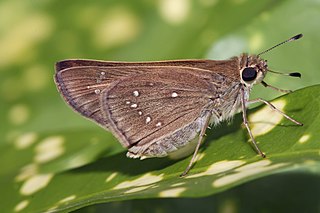 W
WSkippers are a family of the Lepidoptera named the Hesperiidae. Being diurnal, they are generally called butterflies. They were previously placed in a separate superfamily, Hesperioidea; however, the most recent taxonomy places the family in the superfamily Papilionoidea, the butterflies. They are named for their quick, darting flight habits. Most have their antenna tips modified into narrow, hook-like projections. Moreover, skippers mostly have an absence of wing-coupling structure available in most moths. More than 3500 species of skippers are recognized, and they occur worldwide, but with the greatest diversity in the Neotropical regions of Central and South America.
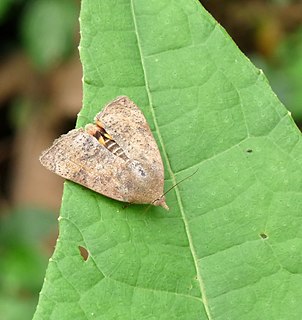 W
WHyblaeidae are the "teak moths", a family of insects in the Lepidopteran order. The two genera with about 18 species make up one of the two families of the Hyblaeoidea superfamily, which in the past has been included in the Pyraloidea. Recent phylogenetic studies find varying relationships of Hyblaeoidea among Ditrysian Lepidoptera: Mutanen et al. (2010) find the superfamily to group either with Pyraloidea, or – more often – with Thyridoidea or butterflies. The results of Wahlberg et al. (2013) and Heikilä et al. (2015) indicate a sister-group relationship with Pyraloidea.
 W
WImmoidea is a superfamily of pantropical moths containing only the family Immidae comprising ten genera with around 250 species, over half of them in the genus Imma. Many are brightly coloured and diurnal. The position of this group is currently uncertain within the group Obtectomera. The larvae feed on the leaves of dicotyledons and conifers including Podocarpus.
 W
WLasiocampoidea is the superfamily of "lappet moths" (Lasiocampidae), containing one family of small to very large moths.
 W
WLophocoronoidea is a superfamily of insects in the order Lepidoptera. There is a single extant genus, Lophocorona, in the family Lophocoronidae. These are small, primitive nocturnal moths restricted to Australia whose biology is largely unknown.
 W
WMicropterigoidea is the superfamily of "mandibulate archaic moths", all placed in the single family Micropterigidae, containing currently about twenty living genera. They are considered the most primitive extant lineage of lepidoptera. The name comes from the Greek for mikros, little and pterux, a wing. The fossil record of the group goes back to the middle-late Jurassic with the earliest known species being Auliepterix from the Karabastau Formation in Kazakhstan.
 W
WMimallonidae Burmeister (mimallonids), sometimes known as "sack-bearer" moths for the larval case-building behavior, are a family of Lepidoptera containing over 300 named species in 43 genera. These moths are found only in the New World, with most taxa occurring in the Neotropics. Adult moths are externally similar to those belonging to some of the other Macroheterocera families Bombycoidea and Drepanoidea, and thus have been variously treated as belonging to either one of these or other superfamilies.
 W
WNeopseustidae is a small family of day and night-flying "archaic bell moths" in the order Lepidoptera. They are classified into their own superfamily Neopseustoidea and infraorder Neopseustina. Four genera are known. These primitive moths are restricted to South America and Southeast Asia. Their biology is unknown.
 W
WNepticuloidea is a superfamily of usually very small monotrysian moths that are characterised by small or large eyecaps over the compound eyes. It comprises two families, the "pigmy moths" (Nepticulidae), with 12 genera which are very diverse worldwide and are usually leaf miners, and the "white eyecap moths" (Opostegidae), also worldwide but with five genera and about a ninth as many species, whose biology is less well known.
 W
WNoctuoidea is the superfamily of noctuid or "owlet" moths, and has more than 70,000 described species, the largest number of for any Lepidopteran superfamily. Its classification has not yet reached a satisfactory or stable state. Since the end of the 20th century, increasing availability of molecular phylogenetic data for this hugely successful radiation has led to several competing proposals for a taxonomic arrangement that correctly represents the relationships between the major lineages.
 W
WThe superfamily Papilionoidea contains all the butterflies except for the moth-like Hedyloidea.
 W
WThe Pterophoridae or plume moths are a family of Lepidoptera with unusually modified wings. Though they belong to the Apoditrysia like the larger moths and the butterflies, unlike these they are tiny and were formerly included among the assemblage called "microlepidoptera".
 W
WThe Pyraloidea are a moth superfamily containing about 16,000 described species worldwide, and probably at least as many more remain to be described. They are generally fairly small moths, and as such, they have been traditionally associated with the paraphyletic Microlepidoptera.
 W
WSchreckensteinioidea is a superfamily in the insect order Lepidoptera containing a single family, Schreckensteiniidae, or "bristle-legged moths", because of the stout spines on the hindlegs. The superfamily and family were both described by Thomas Bainbrigge Fletcher in 1929. The relationships of this family within the group apoditrysia are currently uncertain. One of the species, the blackberry skeletoniser, is widespread and common across Europe and has been introduced as a biological control to Hawaii, whilst three species of Corsocasis occur in South East Asia.
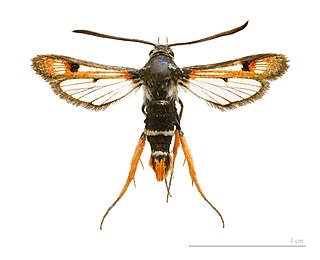 W
WSesioidea is the superfamily currently containing clearwing moths (Sesiidae), castniid moths (Castniidae) and little bear moths (Brachodidae). There is evidence from head and thoracic morphology that the first two families, internally feeding in plants as caterpillars, are sisters, whilst some brachodids are known to feed on leaf surfaces. Sesioidea are considered to be the sister group of Cossoidea which contain the also internal-feeding Goat and Leopard moths.
 W
WThe Thyrididae comprise the family of picture-winged leaf moths. They are the only family in the superfamily Thyridoidea, which sometimes has been included in the Pyraloidea, but this isn't supported by cladistic analysis.
 W
WTineoidea is the ditrysian superfamily of moths that includes clothes moths, bagworms and relatives. There are six families usually included within it, Eriocottidae, Arrhenophanidae, Lypusidae, Acrolophidae, Tineidae and Psychidae, whose relationships are currently uncertain.
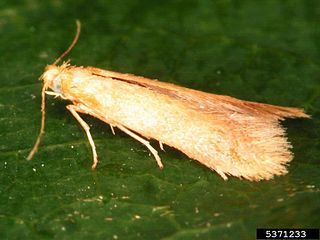 W
WTischerioidea is the superfamily of "trumpet" leaf miner moths. The superfamily contains just one family, Tischeriidae, and traditionally one genus, Tischeria, but currently three genera are recognised, widespread across the world including South America, except for Australasia. This is one candidate as the sister group of the bulk of Lepidoptera, the Ditrysia, and they have a monotrysian type of female reproductive system. These small moths are leaf-miners in the caterpillar stage, feeding mainly on Fagaceae, Asteraceae, and Malvaceae (Astrotischeria), and some also on Rhamnaceae, Tiliaceae, and Rosaceae.
 W
WThe Tortricidae are a family of moths, commonly known as tortrix moths or leafroller moths, in the order Lepidoptera. This large family has over 11,000 species described, and is the sole member of the superfamily Tortricoidea, although the genus Heliocosma is sometimes placed within this superfamily. Many of these are economically important pests. Olethreutidae is a junior synonym. The typical resting posture is with the wings folded back, producing a rather rounded profile.
 W
WUrodoidea is a superfamily of moths in the clade Apoditrysia. It currently contains two families: Urodidae and Ustyurtiidae.
 W
WYponomeutoidea is a superfamily of ermine moths and relatives. There are about 1,800 species of Yponomeutoids worldwide, most of them known to come from temperate regions. This superfamily is one of the earliest groups to evolve external feeding and to colonize herbs like shrubs and trees.
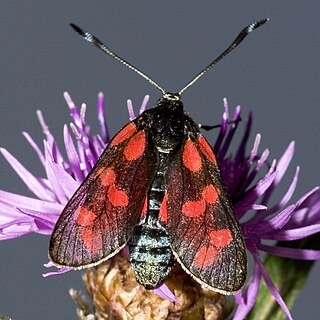 W
WThe Zygaenoidea comprise the superfamily of moths that includes burnet moths, forester moths, and relatives.